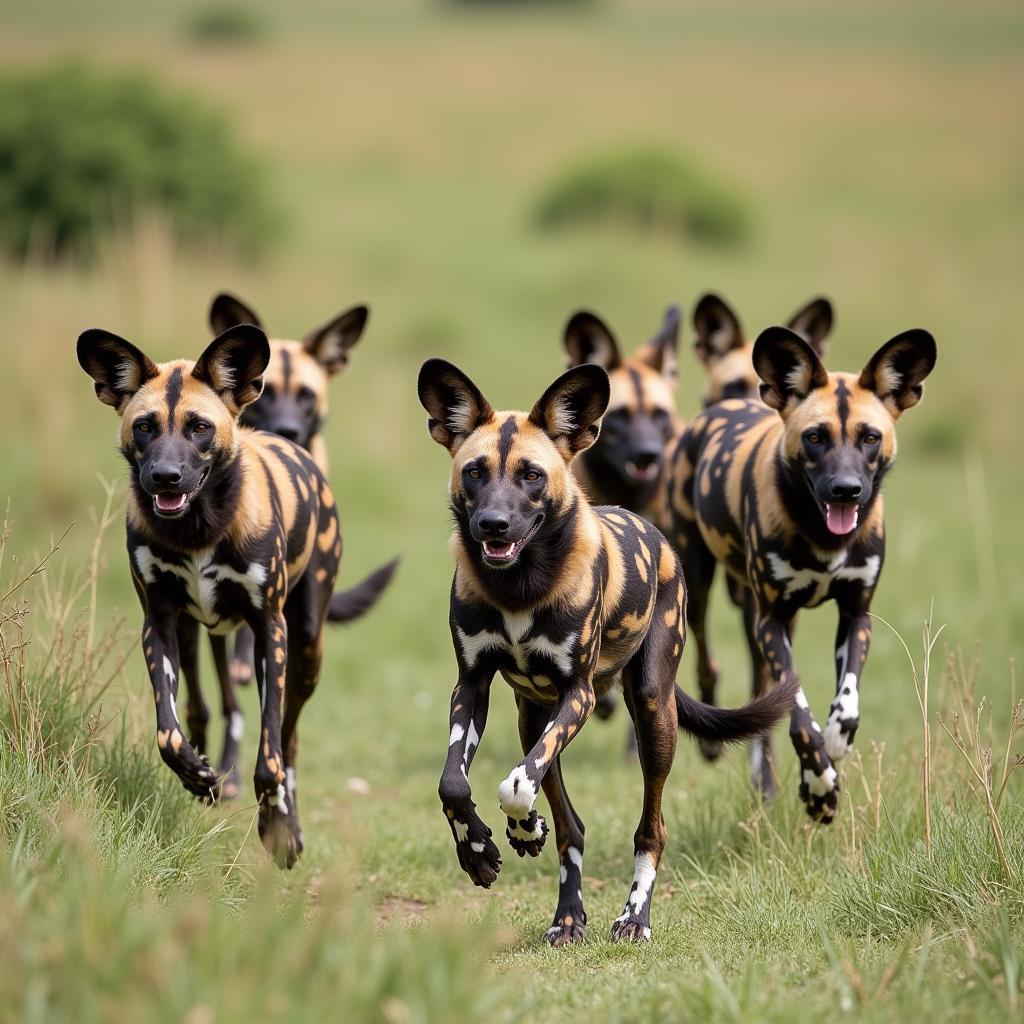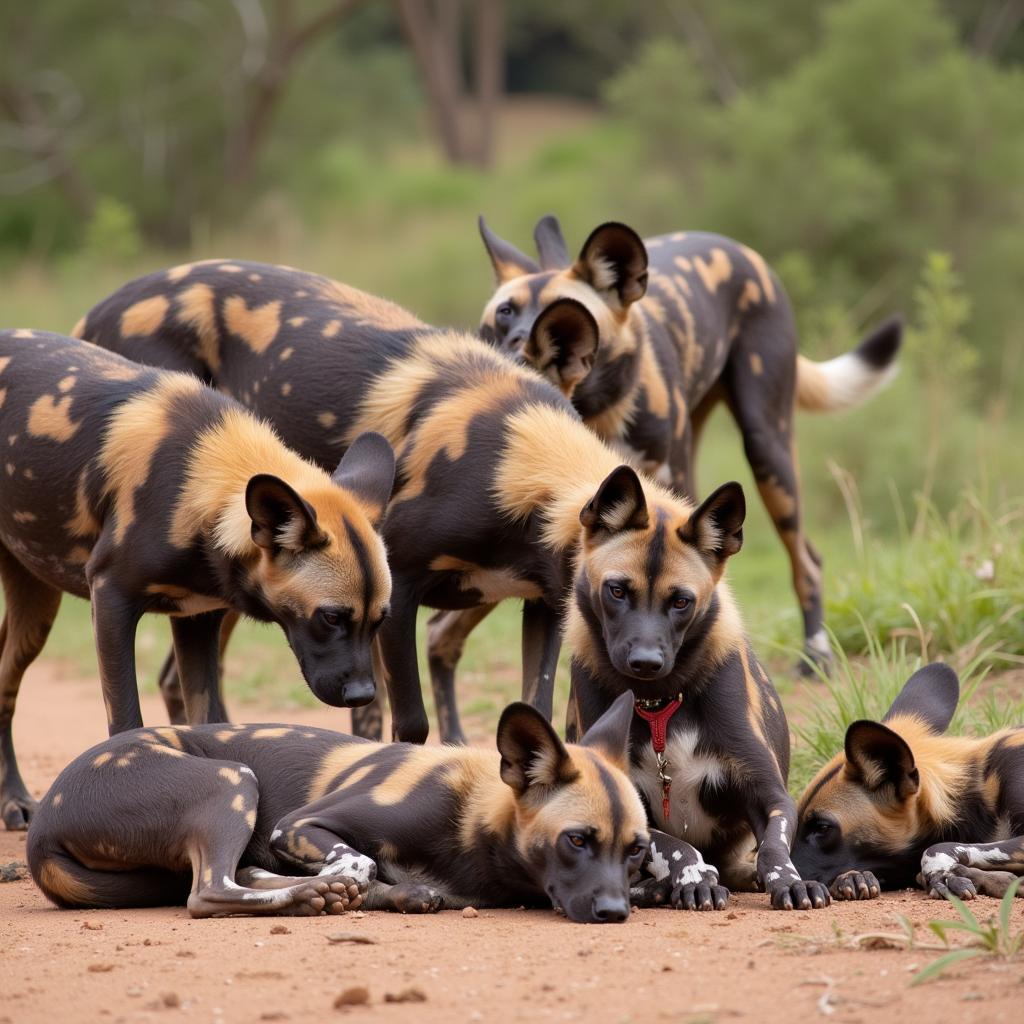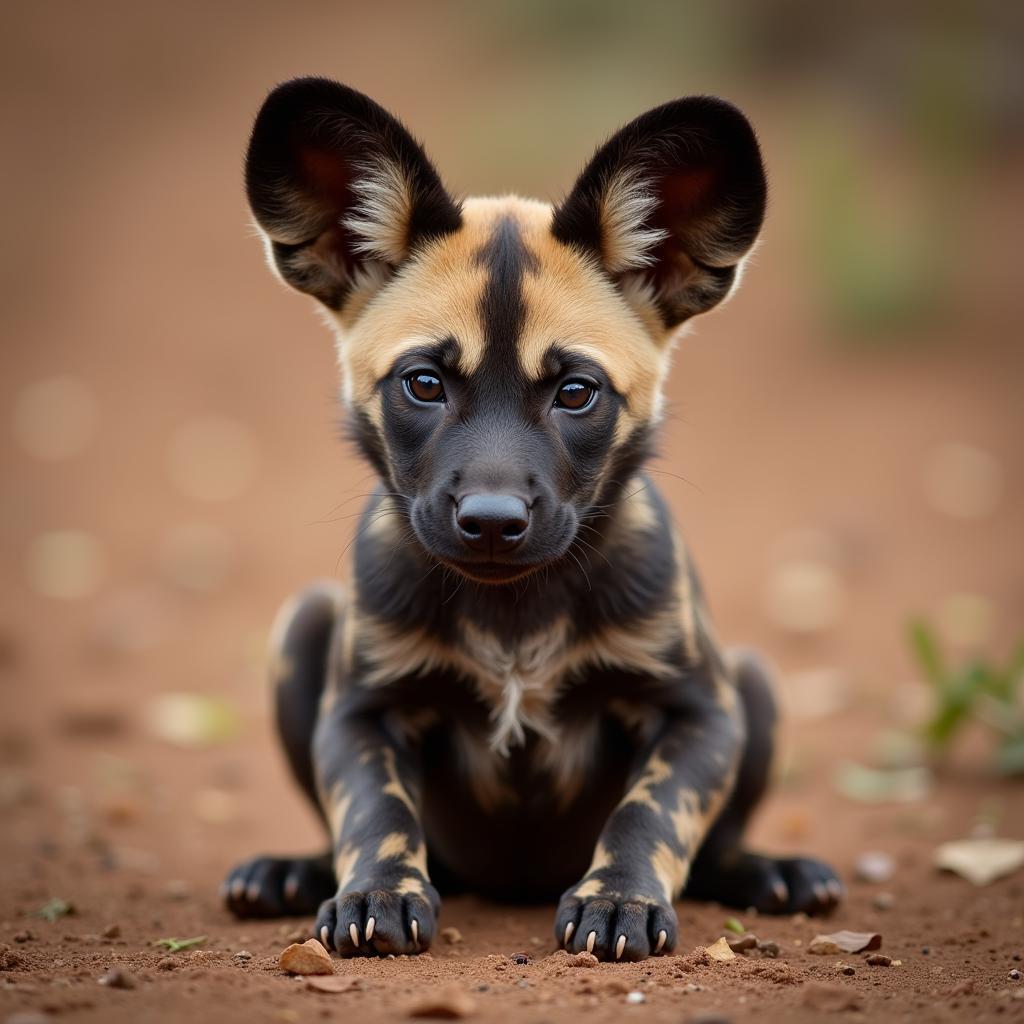All About the African Wild Dog: A Unique and Endangered Predator
The African wild dog, also known as the painted wolf or Cape hunting dog, is a fascinating and endangered carnivore found in sub-Saharan Africa. These highly social animals are known for their striking, patchy coats, incredible stamina, and cooperative hunting strategies.
 African wild dogs hunting in a pack
African wild dogs hunting in a pack
A Masterpiece of Evolution: Physical Characteristics
African wild dogs are relatively slender canids with long legs, large ears, and a distinctive, mottled coat pattern. Each individual has a unique combination of black, yellow, and white fur, making them easily identifiable within their packs. Their long legs and lightweight build allow them to reach impressive speeds of up to 70 kilometers per hour during chases. Unlike other canids, African wild dogs have only four toes on each foot, which further contributes to their speed and agility.
The Power of the Pack: Social Structure and Behavior
African wild dogs are highly social animals that live and hunt in packs, typically consisting of 6 to 20 individuals. These packs are led by a dominant breeding pair, and there’s a strong emphasis on cooperation and communal care for pups. Unlike many other social animals, it’s often the females who disperse from their natal packs to find mates.
 African wild dog pack socializing
African wild dog pack socializing
Hunting Strategies: Masters of Endurance
African wild dogs are incredibly efficient hunters, boasting a success rate of up to 80% on their hunts. They rely on a combination of stamina and teamwork to pursue prey over long distances, often wearing their target down until it can no longer resist. Their prey primarily consists of medium-sized antelopes like impalas and gazelles.
Communication: A Symphony of Sounds
Communication is key for a successful hunt and maintaining strong social bonds within the pack. African wild dogs communicate using a variety of vocalizations, including whistles, chirps, and a characteristic “hoo” call that can be heard over long distances. These calls help coordinate movements, signal danger, and strengthen social connections.
Conservation Challenges: A Fight for Survival
Despite their remarkable adaptations, African wild dogs are one of the most endangered carnivores in Africa. Habitat loss, disease outbreaks like canine distemper and rabies, and human-wildlife conflict pose significant threats to their survival.
 An African wild dog pup
An African wild dog pup
What Can Be Done?
Conservation efforts are underway to protect this iconic species. These initiatives include establishing protected areas, promoting responsible tourism, and working with local communities to mitigate human-wildlife conflict. Raising awareness about the plight of the African wild dog is crucial to securing their future.
Conclusion: A Future for the Painted Wolf
The African wild dog, with its unique appearance and remarkable social dynamics, stands as a testament to the diversity and wonder of the natural world. Understanding the threats these animals face and supporting conservation efforts is essential for ensuring the survival of this iconic African predator.


